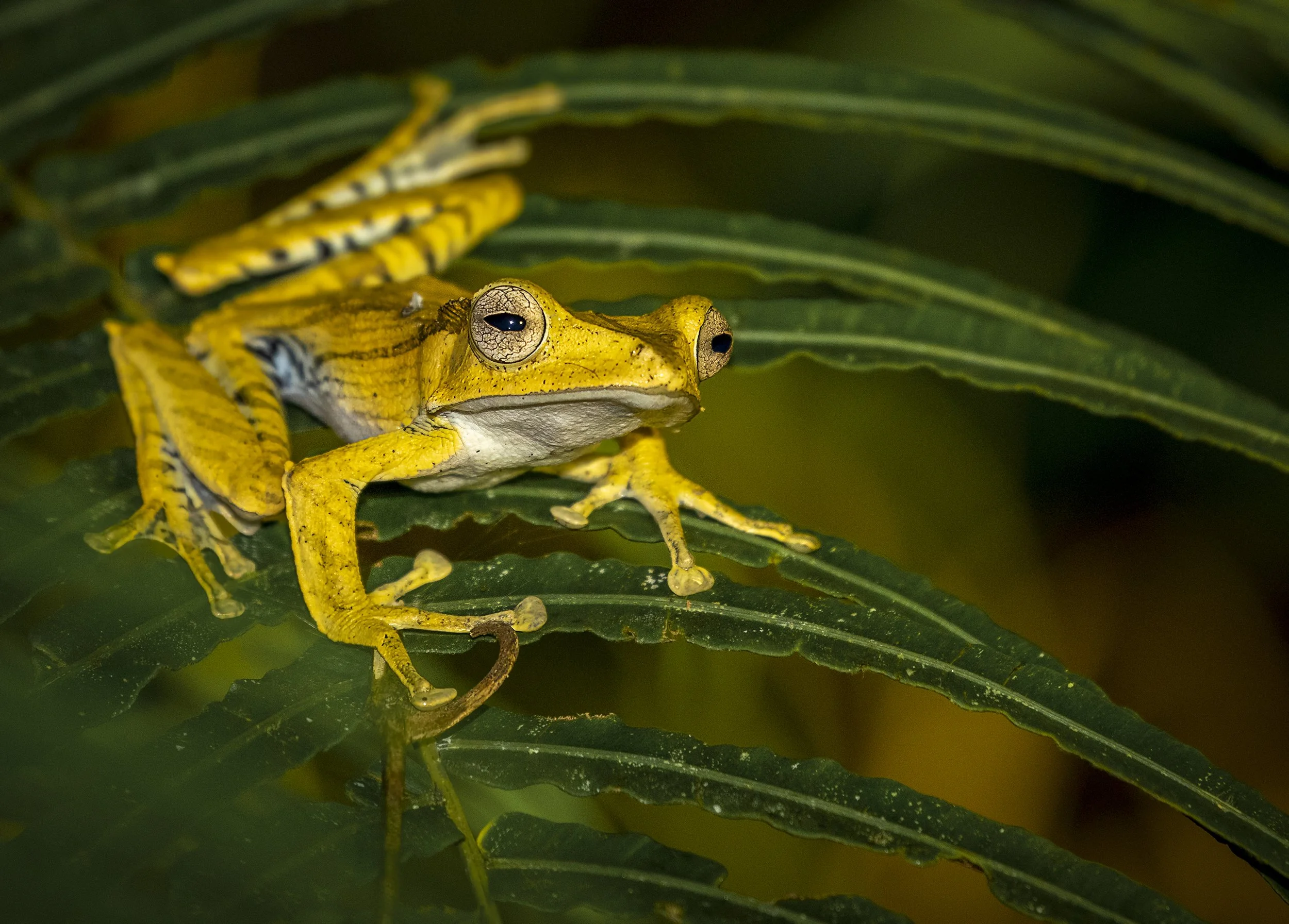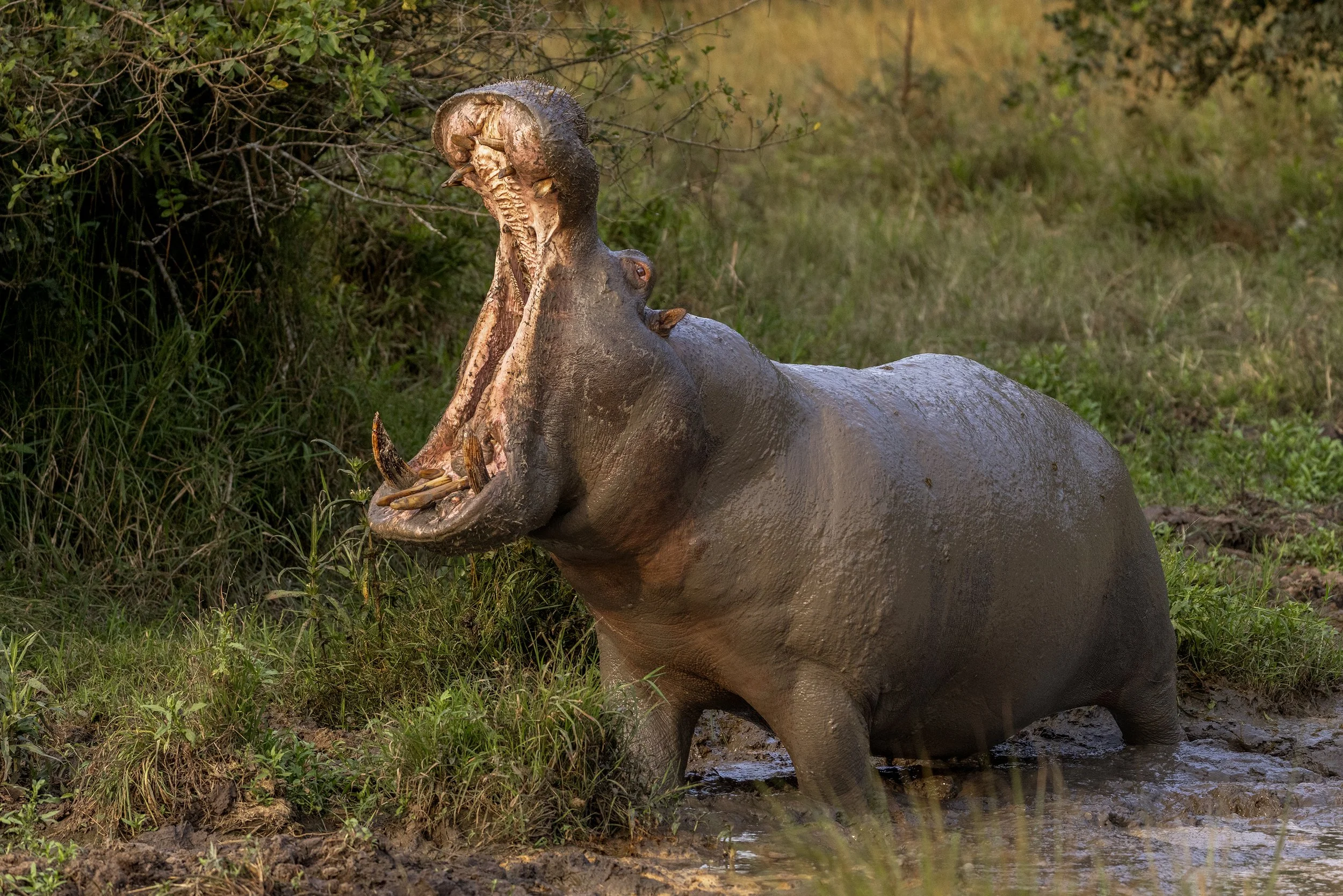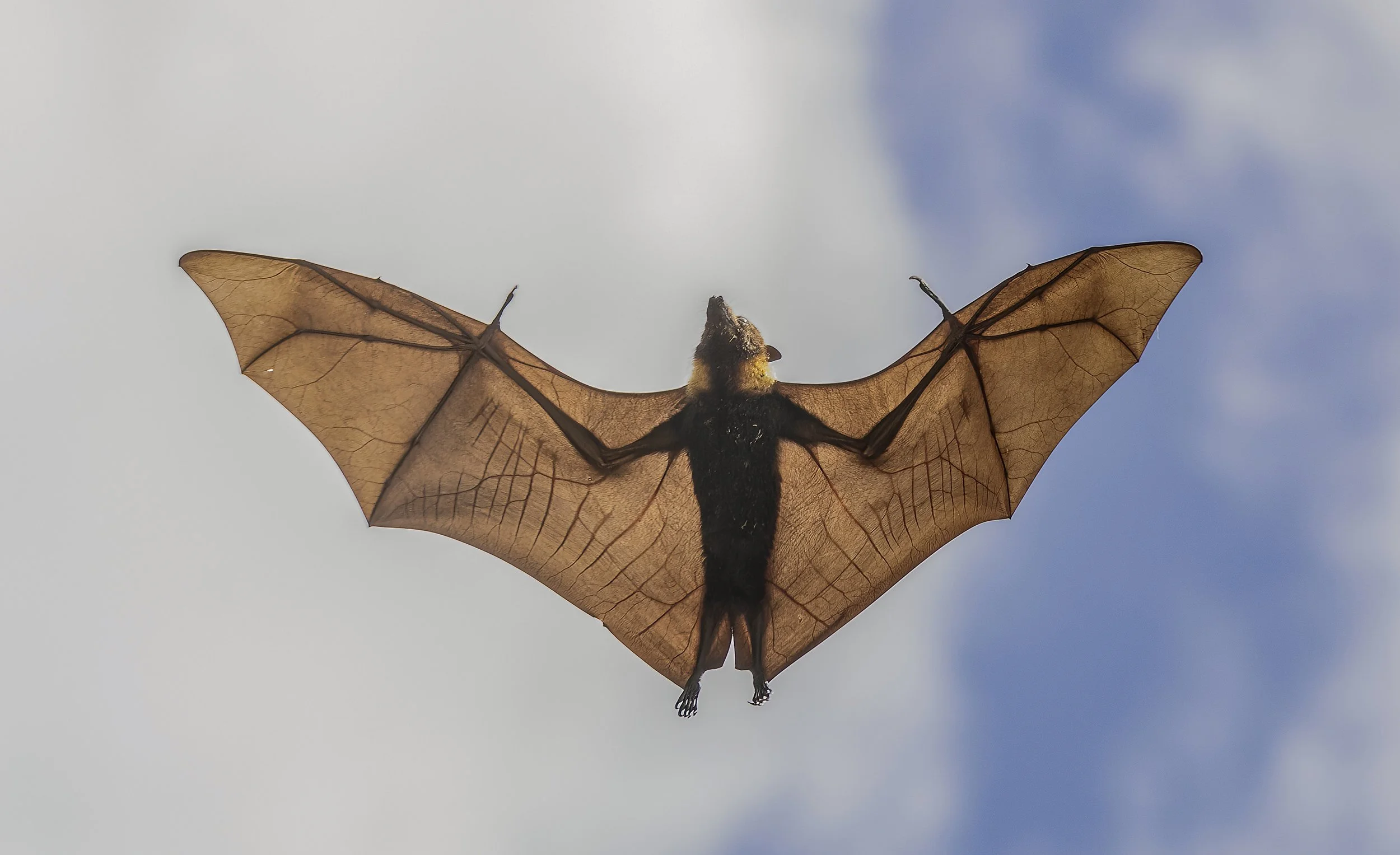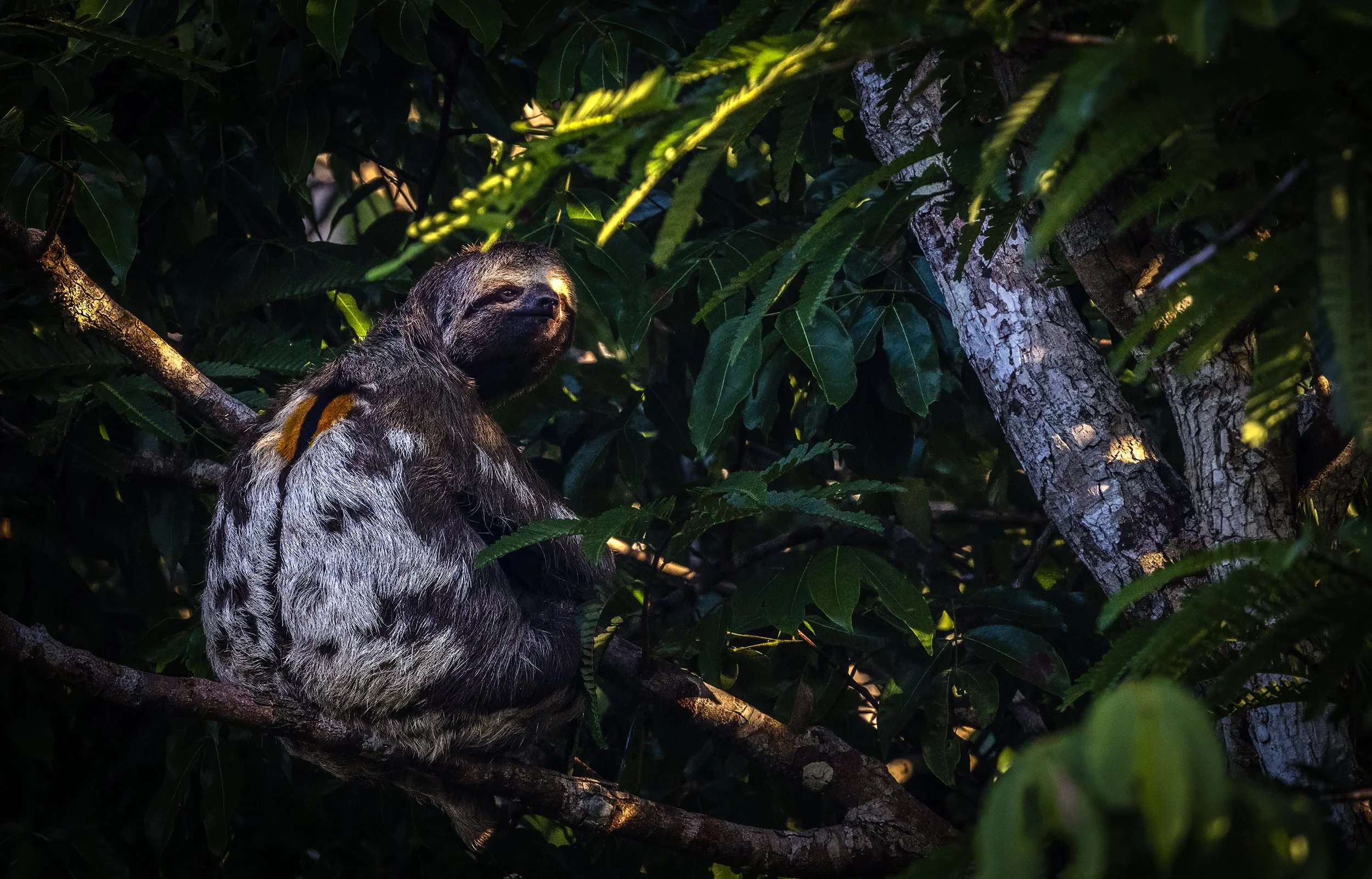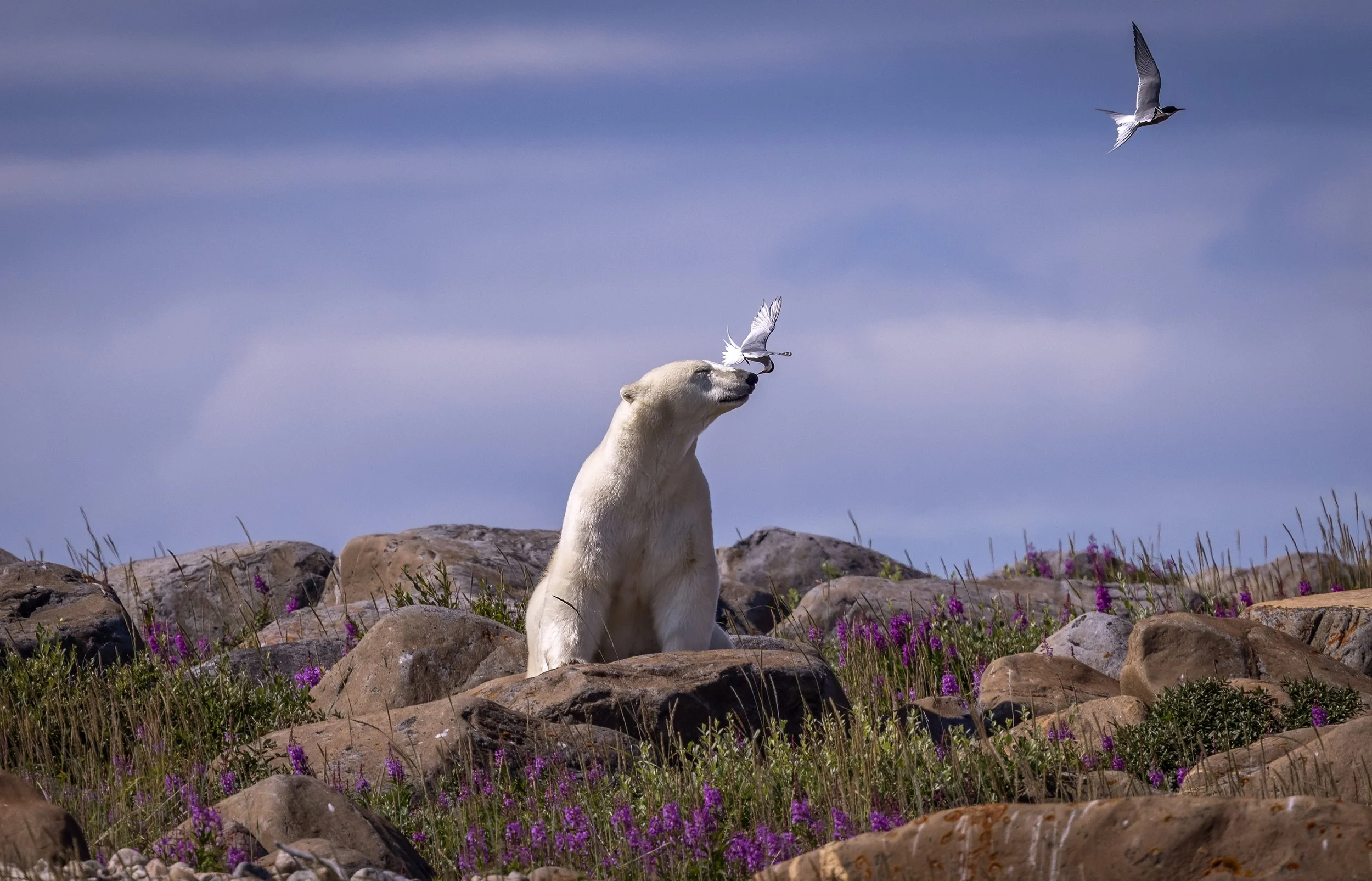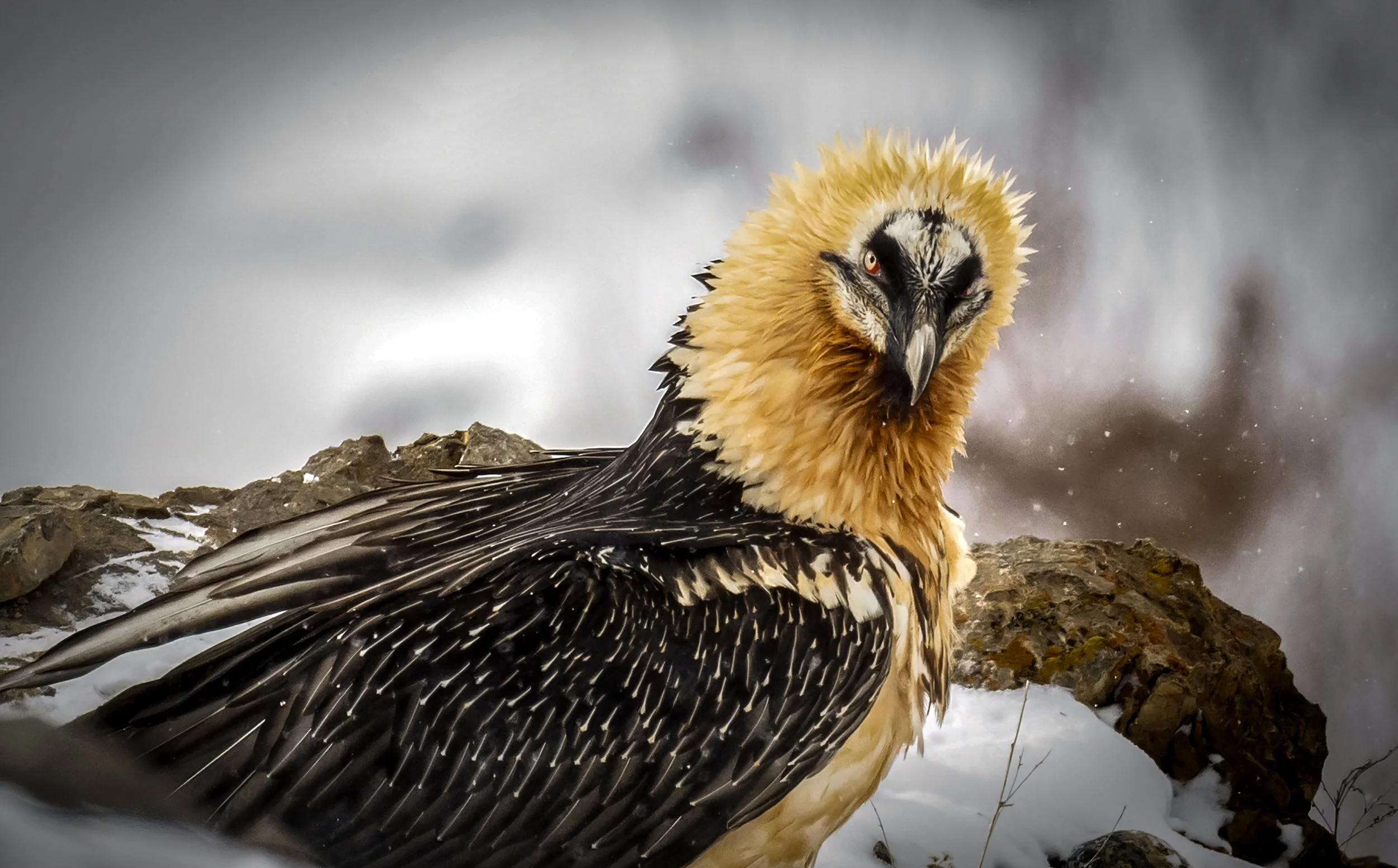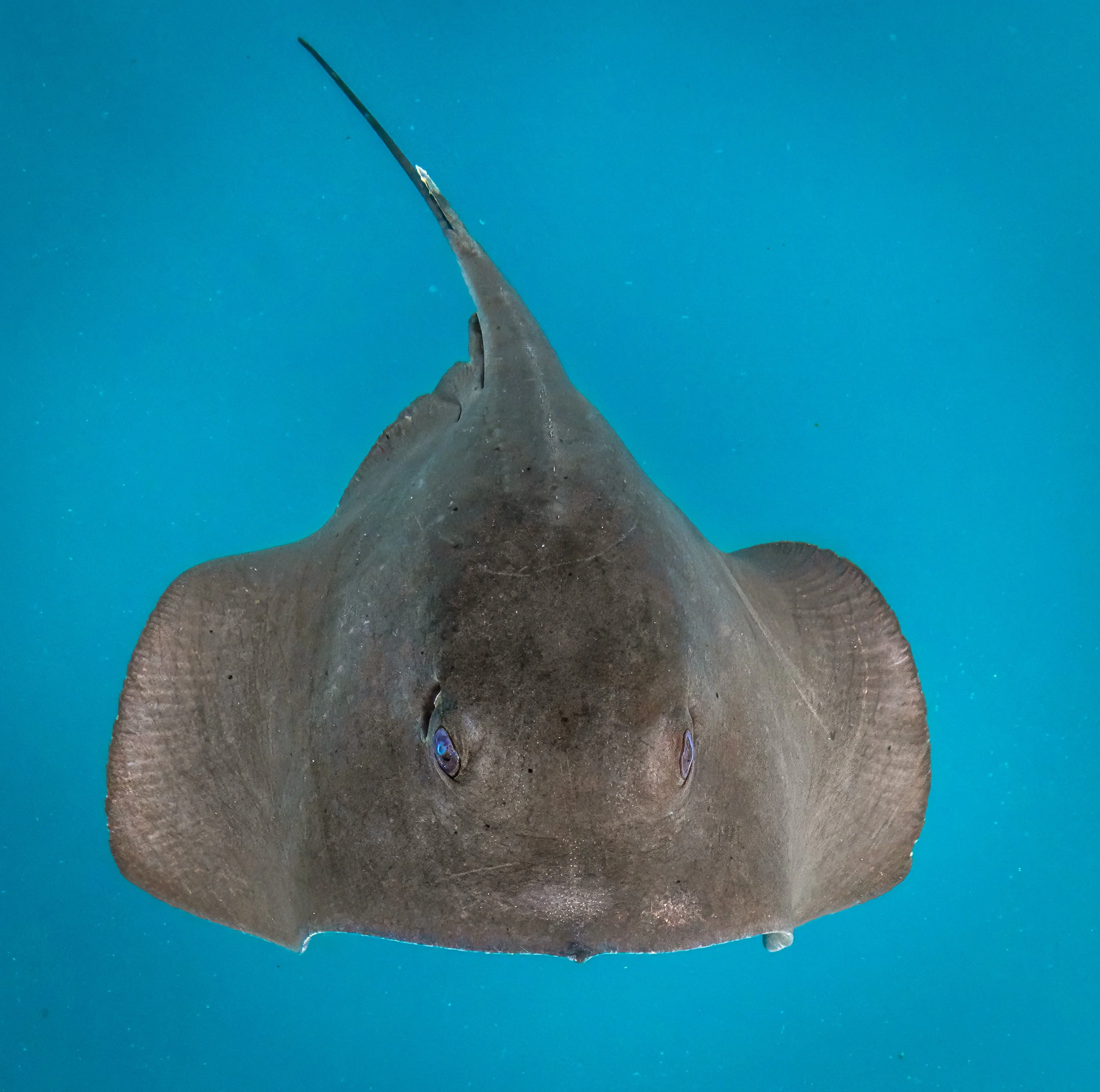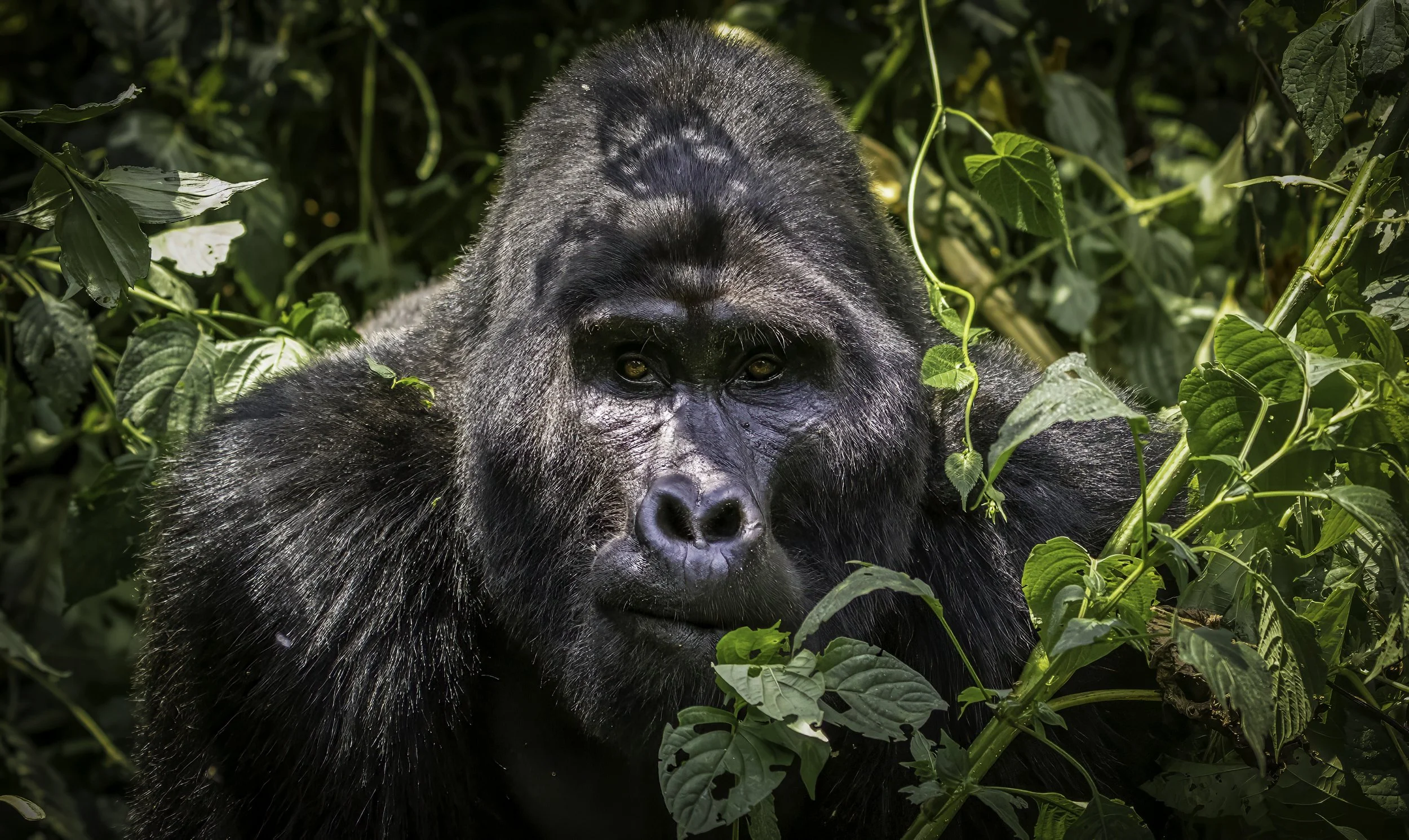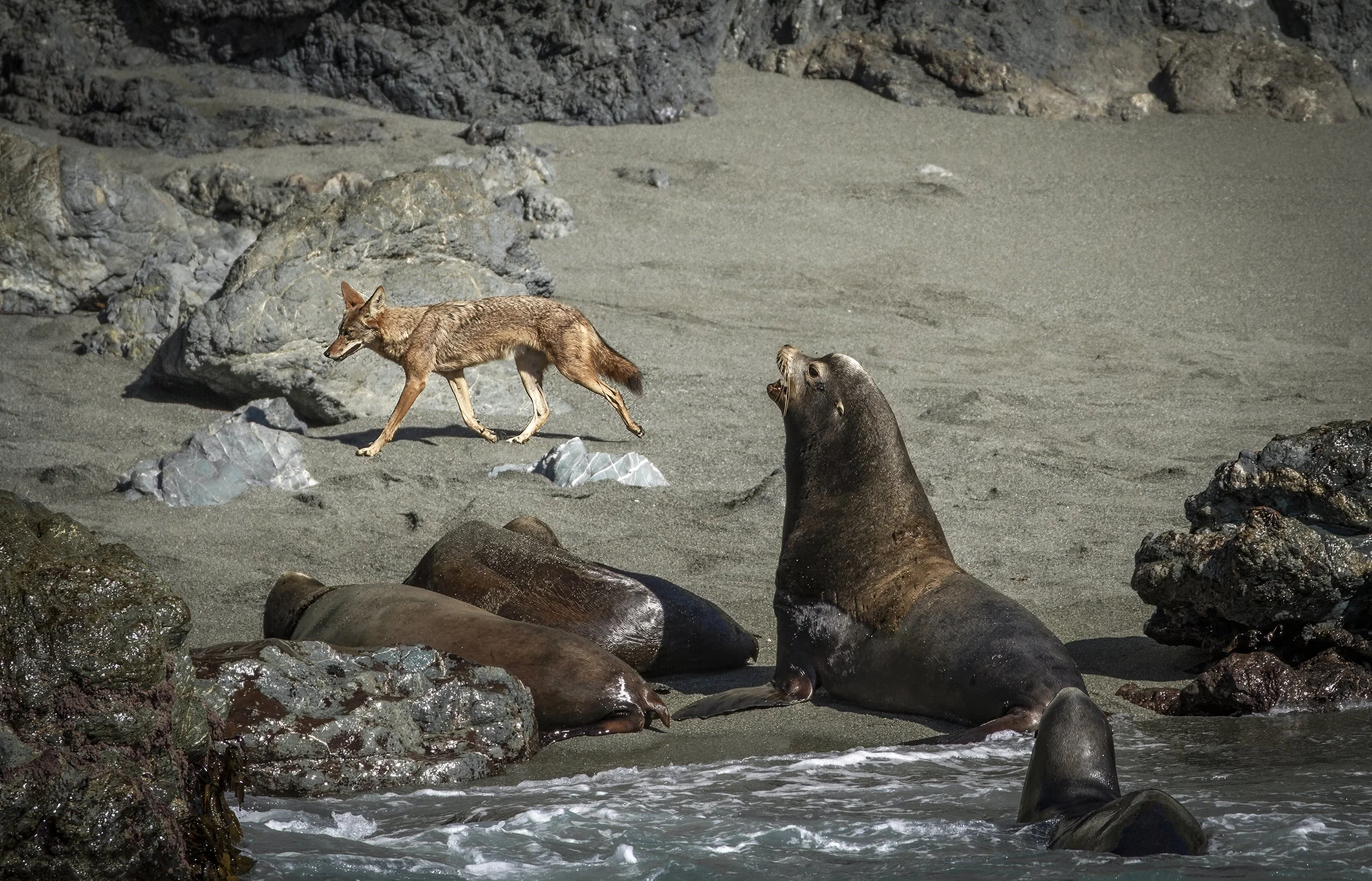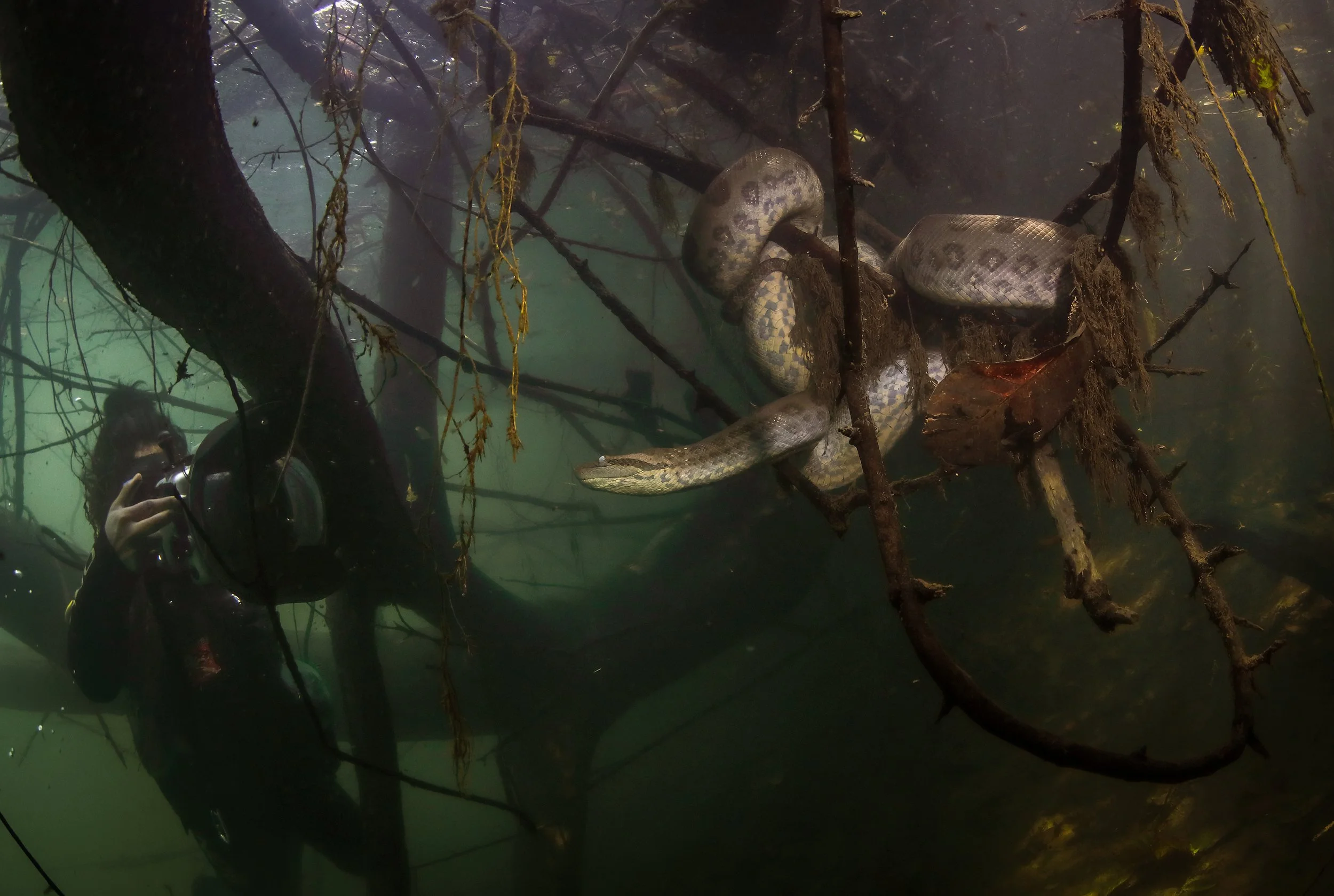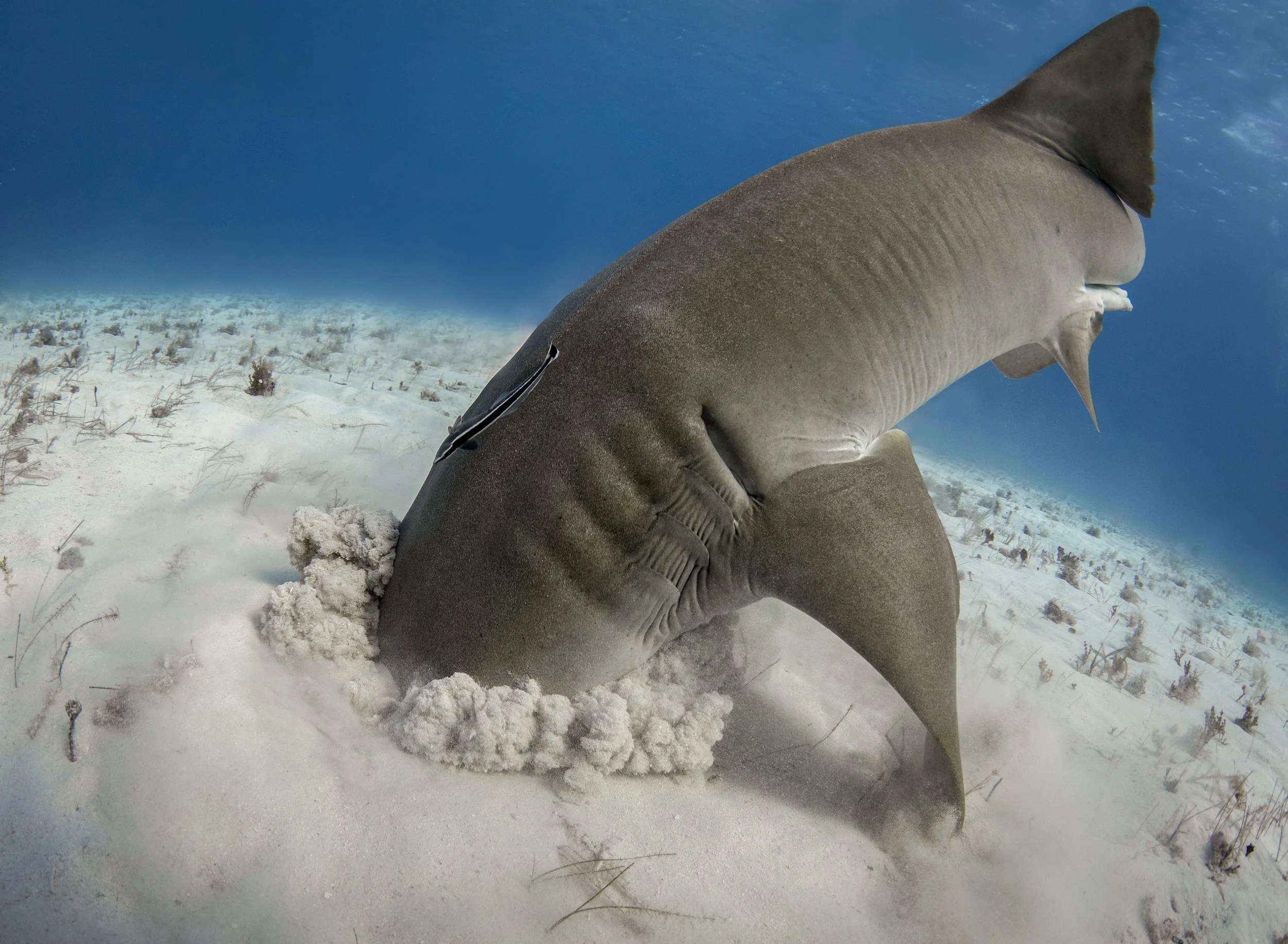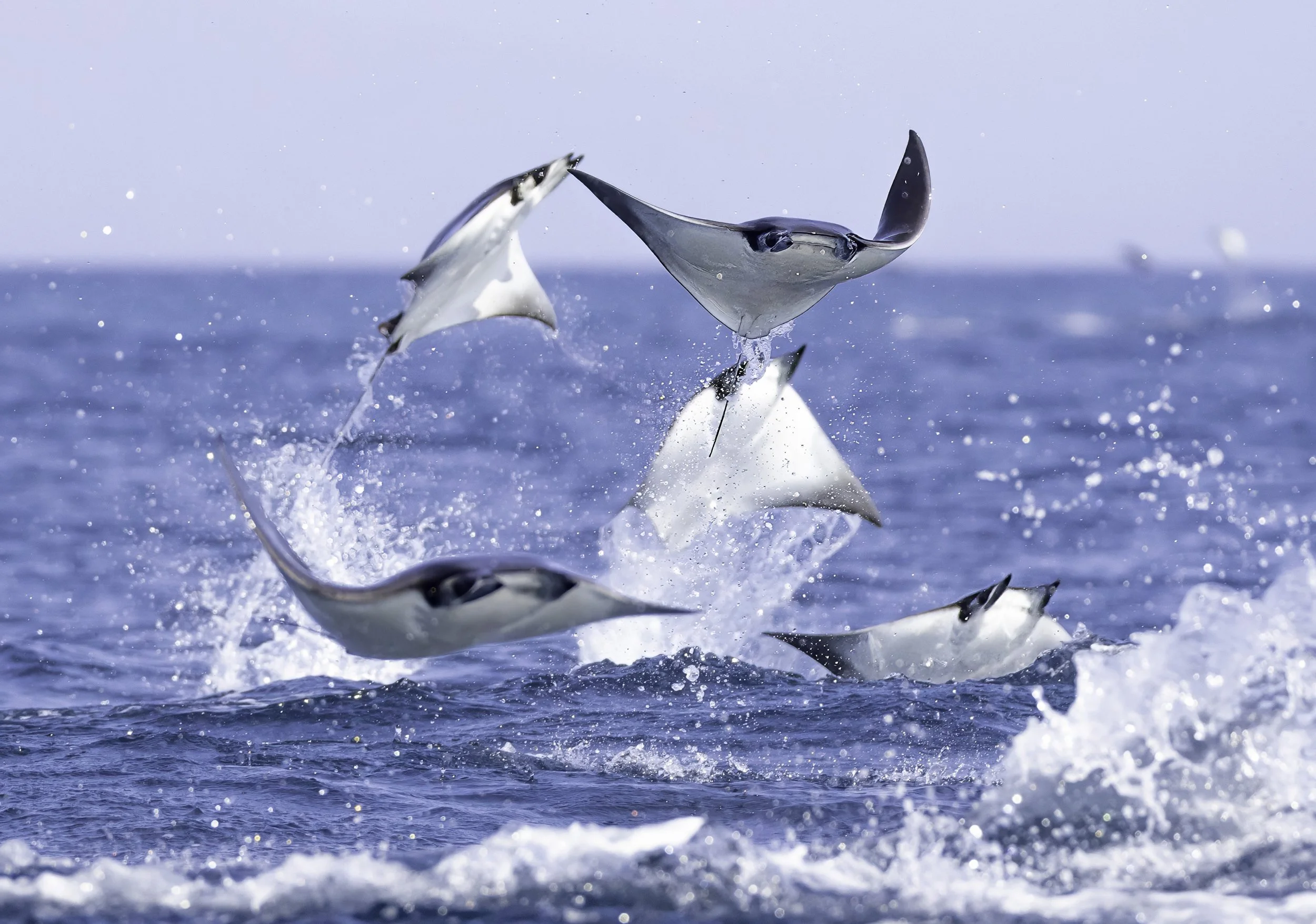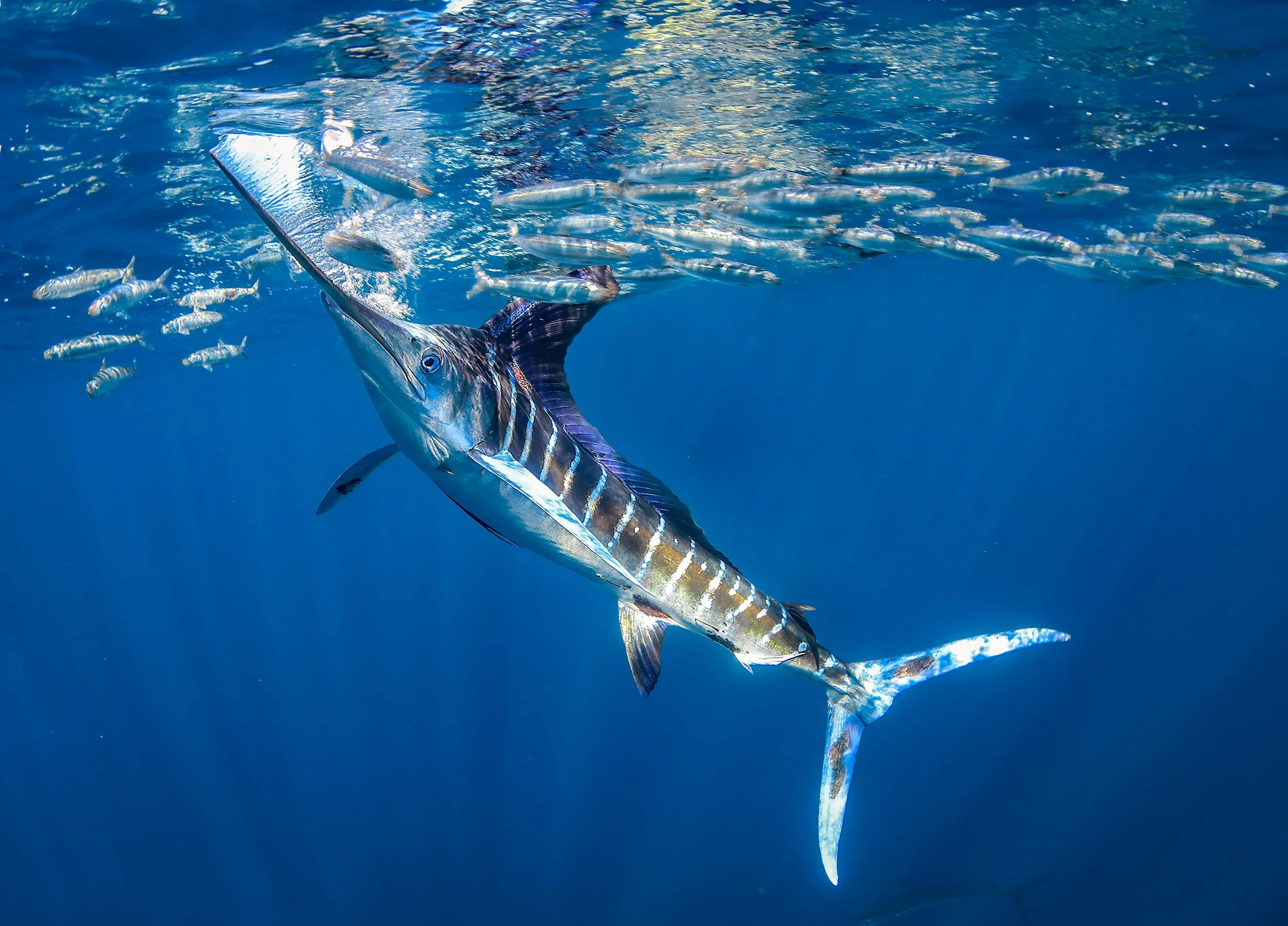Behind the Lens: Shot of the Day
This is where I take you beyond the image… sharing the story behind the shot, the challenges of capturing it, and the techniques I used to make it happen. From camera settings to in-the-field experiences, this is a deep dive into the world of wildlife photography.
1/200, f5.6, ISO 1600
File-eared tree frog
(Polypedates otilophus)
Photographed in the Deramakot rainforest during a night safari. I think my excitement for frog species really began with this moment. Before this trip, I hadn’t paid much attention to frogs, but seeing the diversity of tree frogs in this forest completely changed that.
Their shapes, colors, and personalities pulled me in. Since then, I’ve been hooked… always looking forward to photographing the next vibrant, beautiful species that appears in the dark.
1/320, f9, ISO 1000
Ocean Sunfish
(Mola mola)
We were in Baja, Mexico, when our captain got a radio call from a couple of fishermen friends: a mola mola had surfaced nearby. He passed the message along, on an open channel, of course, which meant every boat operator in the area instantly knew about it too.
Luckily, we were close. We gunned the engines and reached the spot first, giving us a few precious minutes alone with this unusual, strangely beautiful fish.
Mola molas aren’t easy to find in these waters. Encounters here take equal parts luck, timing, and a little help from friends on the water. Getting a chance to swim and photograph one is rare.
I added a diver into the frame for scale, just to show the size of these incredible animals. They look fragile, almost cartoonish, but in person they feel ancient.
Moments like this are the heartbeat of Baja… unpredictable, fleeting, and unforgettable.
1/5000, f5.6, ISO 1250
Polar Bears Sparring, Churchill River
Two young adult brothers were sparring in the Churchill River, play-fighting in the cold water for over an hour. We motored up quietly in the boat and watched them go at it, boys being boys, testing strength, practicing the moves they’ll need when real competition comes.
The light was soft and the action nonstop, so I pushed my shutter speed high to freeze every splash, swipe, and expression. I wanted to capture the power and playfulness in each moment, and I’m super happy with how the images turned out. Watching these two bears wrestle in the river was one of those rare, unforgettable experiences that makes Churchill truly special.
1/1000, f5, ISO 1600
Hippopotamus
(Hippopotamus amphibius)
While on safari in Queen Elizabeth National Park, Uganda, we came across a lone male hippopotamus defending a small, muddy waterhole, one that was drying fast under the African sun.
This young bull had a lot of attitude and made it clear he didn’t want company.
He opened his jaws wide, flashing those massive teeth in a classic display meant to intimidate. It was his way of saying, “This mud hole is mine.”
Too young to hold a harem of females, he was spending his days alone, cooling off, conserving energy, and waiting for the right opportunity to move on to a larger waterhole where he might finally get his chance.
Life on the savanna is always about timing, territory, and survival.
1/500, f9, ISO 1000
Rough Toothed Dolphin
(Steno bredanensis)
I encountered this dolphin in the Sea of Cortez, and I had no idea this species even lived here. What a moment, bold, curious, and full of personality.
We’d already had an amazing morning with spotted dolphins, and when I saw another dorsal fin cut through the surface, I assumed it was a bottlenose. I jumped in to take a look, and to my surprise, it turned out to be a rough-toothed dolphin, a species I’d never seen before.
It swam straight up to me in crystal-clear blue water, with visibility easily over 100 feet. My settings were dialed in perfectly from the last encounter, and everything just aligned, the light, the water, the focus, the moment.
A new species, perfect conditions, and that sense of discovery that keeps you chasing the next wild encounter.
Pure Baja magic.
1/1600, f5, ISO 400
Flying Fox
We spent the morning photographing Flying Foxes (Pteropus tonganus), these giant fruit bats that roost in a tree inside a small cemetery on the island of Tongatapu.
Feels a little strange saying that out loud, photographing bats in a graveyard, but it was one of those perfectly odd mornings that travel gifts you.
Trying to capture them in flight was a challenge. Once they left the tree, tracking them against the bright sky was tough, and their wings move faster than you’d expect from something that big. They really do earn their nickname “flying fox,” huge, graceful, and just a bit mysterious.
After a lot of frames and a few missed focus attempts, I finally caught this shot, one flying directly overhead. A strange, beautiful morning among the flying foxes.
1/1600, f6.3, ISO 1600
Alaska Brown Bear
Photographing fishing bears is equal parts joy and chaos. They move constantly, charging, splashing, changing direction in an instant. You just keep shooting, hoping that somewhere in the blur of movement, one frame will capture the magic. When you photograph them, you shoot with a high frame rate, because you do not want to miss anything!
What amazes me most is how completely indifferent they are to us. These massive apex predators stroll right past, focused entirely on the river and the salmon. We’re just background noise in their wild world.
It’s a rare feeling, to stand so close to something that powerful and be utterly ignored.
A reminder that we are visitors here… and what a privilege it is to be tolerated in a place this special.
1/500, f7.1, ISO 1000
South American Sea Lions
Spent a couple of hours in the water with these South American sea lions, some of the most entertaining animals you can share the ocean with. They’re full of energy and personality, and the juveniles are the boldest of all, curious, playful, and sometimes a little bitey.
As a photographer, they’re a joy to capture but a challenge to keep sharp. They move fast, twist even faster, and rarely stay still for more than a second. To freeze their motion, I shoot with a minimum 1/500 shutter speed, anything slower and they blur into streaks of mischief.
This type of photography isn’t just about patience, it’s about keeping up with the wild when it decides to dance.
1/400, f9, ISO 800
Mating Mobula Rays
Every summer, the warm waters off Baja come alive with one of nature’s most spectacular gatherings, massive schools of mobula rays. Tens of thousands of them arrive, gliding just below the surface, moving as one living wave.
The mobulas swim in large groups, feeding, courting, socializing, and mating. They often travel in long lines or drift together in massive spinning circles, a mesmerizing ballet of movement and light.
Most of the time, when we slip quietly into the water, the mobulas keep their distance, diving deep, disappearing into the blue. But every once in a while, we get lucky.
When the mobulas are caught up in the frenzy of mating, they seem to forget about us completely. They circle, twist, and soar around each other in an underwater dance that feels almost otherworldly. For a few brief moments, we’re invisible to them, and that’s when the magic happens.
Those are the moments that give you images you never forget, raw, wild, and filled with life.
1/1000, f7.1, ISO 1600
Three-Toed Sloth at Dusk
During our Pink Dolphin River Expedition, we spent the afternoons exploring the flooded forests in search of land wildlife, especially tree sloths.
This time of year, the Amazon River rises dramatically, flooding the forest floor, which helps bring the life up in the canopy down to eye level. The three-toed sloths, which usually rest high in the treetops, are suddenly much closer to the water, sometimes just a few feet above it. It’s a rare and incredible opportunity to photograph these shy, slow-moving animals up close, without disturbing them.
One evening, just as the light began to fade, we found this male sloth perched in a tree, soaking in the last warm rays of sunlight, creating a calm, intimate moment that felt timeless.
He stayed still, watching us, but not bothered. I too some shot, capturing that peace before night took over the forest. It’s one of those simple, beautiful encounters that remind you why patience in the wild is always worth it.
1/320, f9, ISO 800
Mating Sperm Whales
Earlier this year, I had the privilege of witnessing one of the most incredible encounters ever seen underwater, a mating pod of sperm whales.
More than 60 whales gathered together in one of the ocean’s most awe-inspiring social events. Males and females circled, played, communicated, and mated, a living orchestra of sound, power, and movement.
The mature males, easily twice the size of the females, led the pod. They were followed closely by females and younger, subordinate males. It was life unfolding in front of me, the next generation of whales being made in that exact moment.
It was overwhelming. Part of me wanted to film it all, to capture every second of behavior and interaction. The other part wanted to focus on stills, freezing single frames of connection and scale. In the end, I did both. I’m grateful for the photographs that tell the story, but part of me wishes I’d recorded more video, because what I saw was beyond words.
It was raw, wild, and so beautiful, a reminder of what the ocean still holds when we’re lucky enough to be invited in.
1/250, f8, ISO 1000
Green Anaconda on the Riverbank
I love this photo.
This is how we most often find the anacondas we swim with, resting quietly along the riverbanks. At the first hint of danger, they slip back into the water to disappear beneath the surface.
The snakes haul out onto the banks to thermoregulate, warming their bodies after hours in the cool river. They look relaxed, draped across the mud and grass, but they’re never completely at ease. Jaguars roam these forests, not as common here in the southern Pantanal as they are up north, but present enough to keep any snake alert. The slightest vibration is all it takes for an anaconda to drop back into the water and vanish.
That’s when we move… When the snake takes to the river, we slip in too, hoping for a rare underwater encounter with one of South America’s most powerful predators.
I captured this image using my underwater housing and a 15mm fisheye lens, which allowed me to frame not just the snake, but also the world it belongs to, a lush, green river system where everything is alive, alert, and connected.
1/320, f9, ISO 640
Mother and Calf
Among all the moments we hope for in the field, few are as special as seeing a beluga mother with her newborn calf.
It’s one of the most desired images, right up there with a beluga mouthing the camera.
Belugas of all ages are famously curious. They’ll swim right up to us, bump the cameras, and circle in close, especially the juveniles, those playful 4–5-year-olds who are just beginning to lose their grey coats and turn white. They can’t seem to resist checking us out.
But newborns are different. They’re rare, shy, and their mothers are naturally protective. Most keep their distance, watching us from the edge of visibility.
Every so often, though, we meet a mother who’s curious enough to share her world, who glides in close and seems to want to introduce her calf. Those moments are quiet and gentle, full of trust. And when they happen, the photos are pure magic, the kind that remind you how wild grace can look when it decides to let you in.
1/320, f9, ISO 500
Squad Goals
I was diving at Tiger Beach when I spotted a pack of Caribbean reef sharks cruising together just above the sand, perfectly in sync, like a team that had done this a thousand times before.
I saw them from a distance and in a rush, I swam toward them, hoping to catch the moment before they swam apart. As they approached, I dropped down into the sand and waited. The sharks kept swimming directly toward me and before they got close, shifted formation, and swam in different directions.
When I looked at the images later, I realized I had captured a nice image, not exactly what I hoped for, but close enough.
1/320, f8, ISO 400
The Blind Giant
We found her hiding in a hole along the riverbank, a massive green anaconda, the kind of snake you dream about encountering in the water.
Well maybe not everyone dreams of that, but I weirdly do.
She was coiled deep inside her den, almost invisible in the shadows, until she decided she wasn’t comfortable there anymore. Slowly, she began to move. We put on our mask and snorkel and positioned ourselves quietly in her path, the one we hoped she’d take, cameras ready.
When she finally emerged, I noticed something immediately: a white, milky layer covering her eye. She was shedding her skin, a process that temporarily clouds their vision. In that moment, I knew she wouldn’t go far. Vulnerable and half-blind, she slipped from her hole and swam into a deeper, safer den, just a few meters away.
Our encounter lasted only a couple of minutes before she disappeared into the brush. Short, but unforgettable, long enough to capture a few images of her tongue flicking out mid-swim.
Snakes use their tongues to smell their surroundings, even underwater, somehow. I still don’t fully understand how it works, but that mystery is part of what keeps me coming back.
(Posted October 17, 2025)
1/1250, f5.6, ISO 800.
Jaguar Predation on a Caiman
I’ve been traveling to Brazil’s Pantanal for years chasing one dream image, a jaguar hunting a caiman. It’s the kind of moment every wildlife photographer hopes for… raw, powerful, and unforgettable.
I’ve been lucky enough to photograph a jaguar predation on an anaconda before, which is even rarer, but the classic scene of a jaguar taking down a big caiman has always been at the top of my list.
It was the final day of our expedition, after long hours on the water, when the radio crackled to life: “Cat on the hunt.” We raced to the location, hearts pounding, but by the time we arrived, most boats had already taken position.
We were late, or so we thought.
Our captain, was a seasoned pro. He read the situation and quietly maneuvered us into a spot no one else had considered. Moments later, the jaguar made her move. She dragged the massive caiman out of the water and followed a path that brought her directly in front of our boat, head high, muscles flexed, the weight of the kill pulling behind her.
It all happened in seconds. I was firing shot after shot, praying my shutter speed was fast enough, that my focus was locked, that my ISO wasn’t too hot. When I checked the screen, most of them were sharp, clean, perfect. I could breathe again.
I felt bad for the caiman, but also deep respect. Both predator and prey have to eat. This is nature, not cruel, not kind, simply honest. And in that honesty, there’s beauty.
This moment reminded me why I keep returning to the wild… to witness what few ever see, and to tell the story of nature exactly as it is.
(Posted October 13, 2025)
1/400, f9, ISO 800
Orca Hunt on a Mola Mola
While following and photographing a pod of orcas, we had already spent about an hour in and out of the water with them. They were calm, curious, and we didn’t want to overstay our welcome. So, we decided to give them a break and sent up the drone to observe from above.
Not long after, we noticed their pace change, they began accelerating, moving with purpose. Then we saw it: one of the orcas had something massive in its mouth. At first, we thought it might be a large turtle, but as the scene unfolded, we realized it was a mola mola, an enormous ocean sunfish.
We slipped back into the water just in time to witness one of the most powerful and emotional scenes I’ve ever seen. The orcas had hunted and killed the mola. Watching it drift there, breathing its last breaths, was devastating. The mola is such a strange and gentle creature, seeing it like that hit hard.
But at the same time, it was an honor to witness such a raw, natural moment of predation, life and death playing out in front of us. These are the kinds of moments that remind me why I do what I do: to observe, to document, and to tell the story of nature exactly as it is, beautiful, brutal, and endlessly real.
(Posted October 10, 2025)
1/320, f5.6, ISO 3200
Pacific Black Sea Turtle
The Pacific black sea turtle is one of the lesser-known species of sea turtle, a subspecies of the Atlantic green.
I’ve always found it fascinating that this population evolved with such a distinct look: black skin, dark shell, and a quiet mystery around why. I’m not sure what ecological reason shaped that difference, but whatever it is, it gave the ocean one of its most strikingly beautiful turtles.
I found my first Pacific black off La Jolla Shores, California. It was late in the day, the light already fading, and I was just about to call it when my friend Margo signaled me over. She pointed down to a turtle grazing calmly on algae growing over the rocks below.
That moment flipped the switch. I was on fire, snapping frame after frame, adjusting settings, doing everything I could to make the most of the little light left before either the turtle or the sun disappeared.
That’s the challenge, and the beauty, of shooting natural light underwater. Once the sun is gone, so is your day.
But when the moment aligns, the subject, the light… it can be pure magic.
(Posted October 9, 2025)
1/320, f5, ISO 1250
Pink River Dolphin
One of the best experiences I’ve ever had with pink river dolphins.
We were surrounded by them, swimming gracefully through a flooded rainforest. The water glowed with a reddish tint, colored by tannins and nutrients washed down from the forest floor. Those organic pigments, released by decaying leaves and plants, are what give both the water and the dolphins their unique hue.
Photographing in these conditions is a real challenge. Even in shallow water, light struggles to penetrate, forcing me to work outside my comfort zone. My f-stop isn’t where I’d prefer it, shutter speeds run slower, and ISO pushes higher than I like. But when everything aligns, the light, the movement, the connection, the results carry a mood that no clear water ever could. It’s the wild rainforest painting its own version of beauty through these animals and their world.
(Posted October 8, 2025)
1/2000, f7.1, ISO 200
Polar Bears and Arctic Terns
A polar bear sits at the point off Hudson Bay, a favorite summer hangout. The bears spend these warmer months napping near the shoreline, waiting for a chance at a slow moving beluga or scavenging Arctic tern chicks and eggs.
Each year, the terns return to nest here. And each year, the bears follow, drawn by instinct and opportunity. The terns, fierce defenders of their nests, dive-bomb anything that comes too close, even a bear.
Photographing this scene is anything but easy. We’re in small rubber boats, often rocking in the swells, trying to stay balanced and composed while tracking an animal that could vanish in a heartbeat. I was shooting fast, 1/2000 sec shutter speed, when luck lined up. Just as a tern swooped in to peck the bear on the tip of its nose, I caught the frame.
Moments like that remind me how unpredictable the wild can be, and how it rewards patience, timing, and a little bit of chaos.
(Posted October 7, 2025)
1/2500, f11, ISO 1000
Bearded Vulture- The Bone Eater!
Himalayas
I was in my room getting ready for the day, packing gear after an early snow leopard sighting. Suddenly, my guide, a local sherpa, burst in, urging me to grab my camera and come outside. He was rushing me.
Right outside my door, hovering in the wind currents, was a Lammergeier, the bearded vulture I’d been hoping to see. I never imagined it would be this close. It glided back and forth in the air, riding the invisible waves, before settling on a small ledge. There, it picked up an old bone fragment, though I don’t think it ate it.
I wanted to stay longer, watching it work the wind, but my guide reminded me, the snow leopards were calling. With one last look at the Lammergeier, I left, grateful for the unexpected gift of its visit.
1/400, f9, ISO 1000
Pelagic Stingray
While photographing a baitball off La Ventana, I found myself surrounded by life… mahi mahi, skipjack tuna, a few sharks, and even a Bryde’s whale feasting on the massive ball of sardines.
Out of the depths, a shape caught my eye. It took me a moment to process what I was seeing, a pelagic stingray, a species I had dreamed of encountering for years.
I kicked hard to get close enough for a proof-of-life shot before it vanished.
To my surprise, it lingered for a few minutes, gliding effortlessly through the chaos, even pausing long enough to pose for a few photos before disappearing back into the blue.
Seeing this rare animal added to the excitement of an already magical day.
1/3200, f5, ISO 3200
Mountain Gorilla, Bwindi Impenetrable Forest, Uganda
That first hike up the mountain felt like something out of a dream.
The memory of seeing the gorillas that day is hazy in the best way, like waking inside a sacred moment.
There’s no real way to describe that feeling.
That deep knowing that we, too, were once like them.
I watched the family move through their morning, chewing leaves, babies tumbling and playing like all babies do.
Then our guide, David, pointed out the silverback.
He was sitting deep inside a thicket, calmly pulling leaves and chewing.
He was so massive.
And then, he stood, and walked straight toward me.
I fired frame after frame, heart pounding, barely breathing.
I wasn’t standing. I was kneeling, face-to-face with one of the most powerful ancestors on Earth.
Thinking back, it felt like a bow.
I was filled with awe. With love. With something that felt like memory.
It was like a waking dream.
I know this all sounds a bit “woo-woo,” but honestly, there’s no other way to describe what it felt like to share space with a being so closely tied to who we are, and who we used to be.
My camera settings were all wrong that day.
But thankfully the photo still came out.
A memory, a mirror, and a reminder of who we are.
(Posted August 2, 2025)
1/1250, f5.6, ISO 250
Coyote & Sea Lions, Magdalena Bay, Mexico
While snorkeling near a sea lion colony off Magdalena Bay, I was trying to catch images of sea lions weaving through the frame, darting, dancing, full of energy.
But then, a Pacific black sea turtle drifted by, and I couldn’t help but follow it. I lost track of everything else.
That’s when I heard my name being shouted from the boat.
I looked up to see my crew waving frantically, and my first thought was that someone in the group had gotten hurt.
I swam back as quickly as I could. But as I got to the boat, my captain yelled, “There’s a coyote on the coast!”
I jumped aboard, tore open my dry bag, grabbed my long lens, and started scanning the coastline.
And there it was: a lone coyote, scavenging among the rocks, weaving right through the sea lion colony.
The sea lions were losing it, barking, growling, clearly agitated by this unexpected intruder. The locals couldn’t believe it. They didn’t think a coyote could even access that rocky stretch of coast.
But here it was, moving freely, unbothered, wild as ever.
It was one of those rare moments that tells a hundred stories all at once…
Predator and prey. Land and sea. Territory, instinct, and the wild harmony that still exists in the edges of the world.
(Posted July 27, 2025)
Anaconda in Bonito, Brazil
We found this young female anaconda wrapped around a fallen tree branch, resting in the calm waters of Bonito.
She was in the process of shedding her skin, her eye clouded with a pale white film, leaving her temporarily blind. In that state, she was relying solely on smell and vibration to sense the world around her.
To get into position for this shot, we had to gear up with scuba equipment and swim beneath a tangle of submerged debris. Once in place, we spent about 45 minutes with her.
She didn’t move the entire time, calm, coiled, and otherworldly.
Looking back, I wish we had stayed longer. The moment was special, and though we were hopeful to find a larger snake later in the day, we didn’t come across any others.
That’s how it goes sometimes, you chase what might be next and forget to stretch out the magic already in front of you.
(Posted July 26, 2025)
1/640, f5.6, ISO 1250
Wild Turkeys - South Texas
Photographed in South Texas during a BBC shoot for the series "Mating."
We spent three weeks trying to capture a wild turkey fight on camera… but the deeper story we uncovered was even more fascinating.
Male wild turkeys spend their entire lives together. They're brothers, not just by blood, but by bond. And in this world, brotherhood is everything.
Only one male in the group gets to mate, the biggest, baddest, most dominant one. But instead of competing, the other brothers support him. They form a protective ring while he courts females, guarding against rival males who might swoop in and sabotage the moment.
Why? Because turkeys play the long game. The more brothers you have, the better your odds of passing your shared genetics to the next generation.
The mating ritual itself is full of drama. Males strut and fluff, posturing for days to win over females. When she finally chooses, she lays down, and he balances gently on her back before squatting to mate.
It’s delicate, intense, and happens only once per female, per season.
We came looking for a fight.
What we found was loyalty… and a lesson in brotherhood that runs deeper than feathers.
(Posted July 25, 2025)
1/320, f9, ISO 640
Nurse Shark Hunting - Bimini, Bahamas
I’ve always wanted to capture a nurse shark hunting or feeding in the wild, not just nosing around a bait box on a dive.
On so many dives, I’ve seen them using their powerful suction to try and pull bait from the box, and I’ve often wondered how that same behavior plays out naturally.
This time, I finally got to witness it.
I watched as a nurse shark, using its ampullae of Lorenzini to detect movement beneath the sand, suddenly jammed its face into the sea floor. It began powerfully sucking in sand, which was shooting out of its gills like a firehose. It was trying to extract a sand worm hidden below the surface.
The whole encounter lasted just a few seconds, but it was absolutely incredible to watch. And even more thrilling to photograph.
Moments later, it caught its prey and calmly swam off.
This is exactly the kind of moment I always hope to witness in nature.
(Posted July 23, 2025)
1/1000, f7, ISO 1000
Leopard – Queen Elizabeth National Park, Uganda
We were just finishing breakfast when the call came in, a leopard had been spotted. I was excited, but cautious.
The sighting was a good 30-minute drive from where we were, and in the world of wild cats, that might as well be forever. Still, I had never seen a wild leopard before.
One of my dream animals to encounter.
The drive felt endless, but when we finally arrived, there it was, sleeping in one of those cactus-like euphorbia trees that dot the park, already surrounded by ten safari trucks.
We didn’t get the best position, having arrived late, but as if on cue, the leopard woke up. It leapt down from the tree and began strolling along the dirt road, right between the vehicles.
We repositioned, and just like that, the cat passed right by our truck, then veered off into the tall grasses of the savannah. All I could see were its ears and tail weaving through the brush.
That’s when I noticed a giant termite mound up ahead, and I silently wished… please climb it.
And thankfully, she did.
She perched atop the mound, scanning the horizon, maybe for prey, maybe for threats.
Her back was to me, but she turned her head slightly to the left, just enough for that perfect profile.
I held my breath and fired off frames, whispering to myself, please be in focus... please be in focus.
(Posted July 21, 2025)
1/4000, f5, ISO 1000
Mobula Rays in Flight – Baja, Mexico
Capturing a photo of a jumping mobula ray is one of the toughest shots to get. They breach without warning, and trying to predict where they'll launch is nearly impossible.
When they’re active, you’ve got to sit still, eye glued to the viewfinder, scanning the horizon, ready for that split-second moment.
But once in a while, something rare happens, they all start jumping together. Hundreds of rays launching out of the water like popcorn.
On those magical days, your odds of nailing a good shot go way up.
This image came from one of those days.
Mobulas were popcorning all around us, and I managed to capture a moment where five of them were in the air, all within the same frame. It remains one of my most prized jumping mobula images.
I shot it at 1/4000 sec, f/5, though I meant to shoot at f/9. Somehow I rolled it down by accident, but thankfully it still worked.
Sometimes the moment is so good, it forgives the settings.
(Posted July 20, 2025)
1/320, f9, ISO 1250
Dwarf Caiman - Formoso River, Brazil.
While out searching for anacondas to swim with, we stumbled across this dwarf caiman, hiding underwater, tucked into the shadows along the river’s edge. For me, this species is a dream.
I’ve always had a deep love for these ancient reptiles, and this one, in particular, was a thrill to find.
Smaller than their larger cousins, dwarf caimans are still incredibly striking animals.
This one was trying to hide beneath a tree, keeping still in the dim light. Luckily, I had my video lights with me, and I used them to softly illuminate the scene just enough to snap a few images. The lights brought out the rich texture and color of the caiman’s armored skin, details that would have otherwise been lost in the shadows.
It stayed frozen long enough for all of us to quietly take a few shots. Then, just as silently, it swam off and disappeared.
We didn’t follow.
(Posted July 19, 2025)
1/200, f 5.6, ISO 1600, natural light, with custom white balance.
Thresher Shark – Malapascua Island, Philippines
This image was captured off the coast of Malapascua Island, one of the only places in the world where you can reliably see pelagic thresher sharks. It’s a trip I’ve been itching to repeat... and I will, very soon.
Shooting these sharks is always a challenge. The light is limited, and the depth can push your limits as a diver and a photographer. But on this dive, we got super lucky, the sharks came up to around 60 feet, which allowed us to take full advantage of the available light. That kind of opportunity didn’t happen often back then. I’ve heard rumors that they come up even shallower now, but during our visit, 60 feet was as good as it got.
Thankfully, in that moment, everything lined up, and magic happened.
(Posted July 17, 2025)
1/2500, f5.6, ISO 3200
Greater Rhea – Pantanal, Brazil
We were on a driving safari through a private ranch in the Pantanal, scanning the grasslands for giant anteaters, when we spotted something unusual in the distance. Sitting motionless in the tall grass was a greater rhea, frozen in place on her nest. She was doing everything she could to blend in.
We stopped just long enough to snap a few quiet images before leaving her undisturbed.
My camera settings were all wrong for the shot, I had just been photographing monkeys bouncing through the trees and still had a fast shutter speed dialed in. But sometimes you take the moment as it is, imperfections and all.
What makes this image unforgettable is what happened next.
That night, a jaguar found her. By morning, she was gone. When we passed the site again, the rhea’s nest remained, eggs scattered, and a pair of black vultures picking at what was left.
It was a sobering reminder of how fragile life is out here. One moment you’re witnessing a quiet act of survival... the next, it’s gone.
(Posted July 16, 2025)
1/320, f8, ISO 640
Striped Marlin – Baja, Mexico
Every winter, sardines return to the food-rich waters off Baja, and right behind them come the predators. Striped marlin, sea lions, and whales are reliable visitors to this arena, turning the open blue into a high-speed hunt.
Photographing these striped marlin in motion is a dream. Portraits are nice, but it’s the behavior shots, the chase, the swipe, the strike, that I live for.
Freezing that kind of speed underwater is no small task.
Looking back, I wish I had bumped my shutter to at least 1/500. I was shooting at 1/320, which is cutting it close. But somehow, it worked. I managed to freeze the moment.
One shot. One second. Pure Baja magic.
(Posted July 15, 2025)
1/320, f8, ISO 400
White Shark – Guadalupe Island
To bring the white sharks close for divers, operators at Guadalupe Island used tuna heads or tails attached to ropes, known as hang baits. The idea was to lure the sharks in toward the cages for a better look, without actually feeding them.
As the sharks approached, wranglers would yank the bait away at the last second.
But the sharks learn quickly. Some of them learned to swim beneath the boat, to hide their presence, watching for the exact moment the bait hit the water, then explode upward in a burst of speed, trying to snatch it before it was pulled away.
Sometimes they hit so fast and hard, they launch completely out of the water. This image captures one of those moments, of a white shark crashing back into the ocean after a full-body breach, water exploding all around it. It’s pure power in motion.
In hindsight, I should of been shooting at a shutter speed of 1/500 for moments like this where the shark might explode up with power. I feel fortunate that I was able to capture this shot of the shark and that it was in focus.
(Posted July 14, 2025)
1/500, f3.5, ISO 400
Orca Encounter – New Zealand, 2014
I photographed this orca off the coast of New Zealand while filming a Shark Week episode I was hosting back in 2014. There are moments you wish you could live all over again, this trip, and especially this dive, is one of them.
When I jumped in the water, I wasn’t the shooter I am today. My camera settings were way off, and I was lucky to walk away with the few images I did. But that didn’t take away from the magic of the experience. It remains one of my favorite dives of all time.
We had a rare backstage pass, filming under a special permit that allowed us to swim with orcas in a region where that kind of encounter is otherwise strictly forbidden. And we were joined by none other than Ingrid Visser, the legendary orca advocate who has spent her life fighting to keep orcas wild and out of tanks.
This image, converted to black and white, with added grain to the image shares one of the orcas swimming straight toward me, curious, and confident.
During this period of my life… this encounter was the highlight of my diving career. It was a day of dreams.
(Posted July 13, 2025)
Tiger Sharks: One of the Ocean’s most Iconic Predators.
Few animals command the water like the tiger shark. Bold, curious, and unmistakably powerful, they move with a quiet confidence that captivates everyone around them. For over two decades, these sharks have been at the heart of my work. I’ve spent thousands of hours in the water with them—studying their behavior, earning their trust, and learning how to photograph them in a way that captures their true nature.
The Dance of Light: Capturing God Rays in the Deep
In this Behind the Lens story, I share how natural light alone transformed a quiet moment in the ocean into something unforgettable.
With no strobes and no stage lighting—just god rays pouring through the water, wrapping the animals in soft, golden beams—this piece reveals the beauty of letting nature light the scene.
Waiting on a Tiger – A Wild Moment in India
We visited Jim Corbett National Park hoping to photograph wild tigers—and after days of near misses, one moment finally came together. Eli shares the story, the settings, and the lessons learned during his first-ever tiger encounter in the wild.
Mobula Rays and God Rays | A Father-Daughter Photo Moment
After a tough start to the season, Eli Martinez captures a rare moment of his daughter hovering over a school of mobula rays in perfect light. A story of patience, timing, and the shot that came together.
The Day an Orca Came to Say Hello
In this Behind the Lens story, I share the most intimate encounter I’ve ever had with an orca, and how natural light, timing, and a quiet connection created one of the most unforgettable moments of my life.
South Padre Songbirds: Chasing Color Along the Texas Coast.
Each April, South Padre Island becomes a vibrant rest stop for migrating songbirds. In this journal entry, I share a recent outing spent searching for painted and varied buntings—but instead found beauty in unexpected moments. From indigo buntings to summer tanagers (and plenty of mosquitoes), this is a blog about chasing color, missing the shot, and still calling it a win.
God Rays and Giants… Photographing Great Whites at Guadalupe
This was my last white shark expedition to Guadalupe Island before the closure.
A reflection on beauty, challenge, and what it means to photograph something wild while you still can.
American Crocodile… One of our Last Dive Trips to Banco Chinchorro.
A story from our 2020 trip, with perfect conditions and perfect crocs!
Chasing Color… A Mahi Mahi Encounter off Cabo San Lucas
A photo session with a bull mahi mahi off Cabo San Lucas, MX.
Photographing Leopard Sharks off La Jolla Shores, California
A blog I wrote about diving for leopard sharks in California... this is easily the best beach dive in the world!
Photographing a Toco Toucan in Brazil
The first time I encountered a Toco Toucan in Brazil… I was star struck!
Cenote Diving for a Morelet’s Crocodile in Tulum
A blog I wrote up about the challenges of finding and photographing a morelet’s crocodile in Tulum.
The Mako Shark That Changed Everything
A BTS story and images from a film shoot for the Outdoor Channel, where the goal was to find and dive with an undiveable shark, and the photo opportunity that I sadly lost.
Polar Bears in the Snow Photography
I shared this in a blog a while ago, but thought I would share it here with you all.
Giant River Otter Photo Gallery
Here are some images of giant river otters in the Northern Pantanal, Brazil.
Manta Ray Photo Gallery
Here are some images of manta rays that we encountered during the annual whale shark migration off Isla Mujeres, Mexico.
American Alligator Photo Gallery
For the first edition, I’m featuring my recent alligator photography adventure in Florida, where I navigated tricky lighting, murky waters, and the challenges of working with these incredible prehistoric predators. Stay tuned for tips, tricks, and behind-the-scenes insights from my time in the wild!


